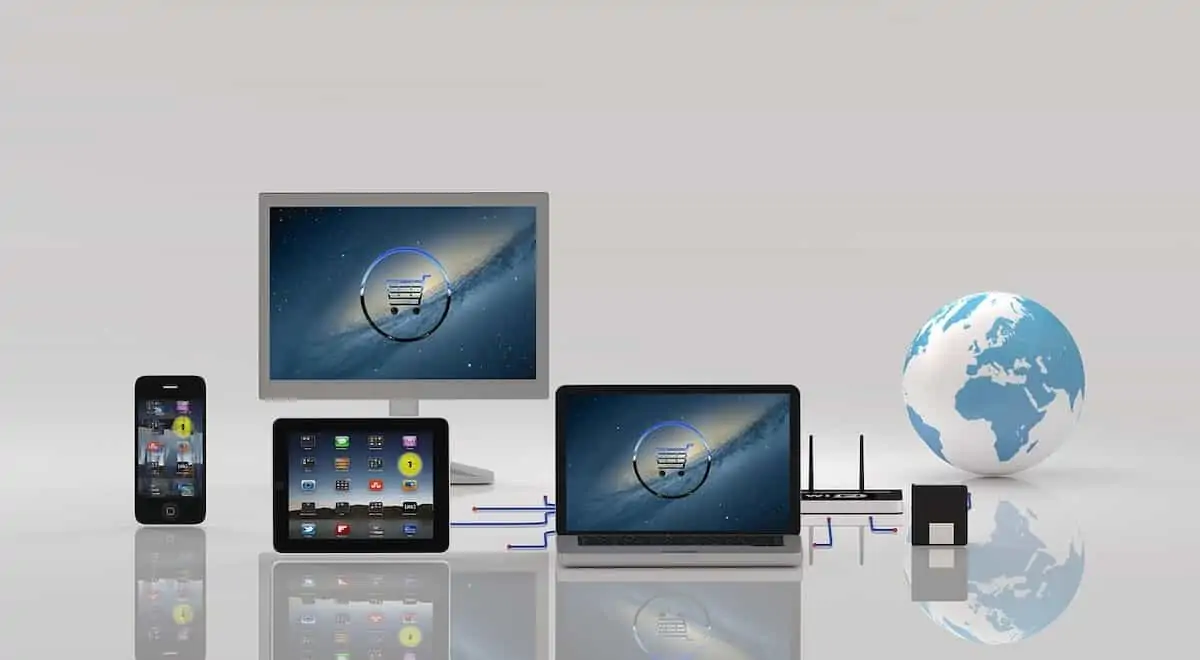Many businesses begin with single-channel distribution. That sole channel could be a brick-and-mortar store or an e-commerce website. In either case, all sales flow through one outlet.
The advantage of a single-channel distribution management system is simplicity. There’s only one channel to manage, one channel to stock, and one channel to market to customers. As a business expands, however, the single-channel model can limit growth.
For example, a local coffee roaster may exhaust the supply of potential customers in a single market. By adding an e-commerce website with nearly unlimited reach, it could make its beans available to every coffee drinker in every city.
While that potential growth may be exciting, it can also be challenging. How will a local company compete with existing national retailers? How can it maintain the appropriate supply of beans to keep customers—near and far—happy?
Identifying and solving these issues can help ensure that a multi-channel distribution management system reaches its full potential.
The Definition of a Multi-Channel Distribution Management System
When distributing a product, each “channel” is an additional avenue to reach customers. Thus, multi-channel distribution management is a strategy to provide customers with multiple ways to purchase the same product.
A multi-channel distribution management system is the set of business processes that enable profitable, sustainable development of multiple distribution channels.

Many multi-channel distribution systems benefit from the support of technology. However, the “system” includes more than just software that supports the execution of a multi-channel strategy. It also includes strategic business planning to help shape the creation and improvement of that execution.
Why Some Businesses Opt for Multi-Channel Distribution
Given the potential challenges of managing a multi-channel distribution strategy, why do some businesses choose this more complex route? The simple answer is growth. However, while the long-term goal is the growth of sales, the near-term outcome may be the growth of a customer base or purchasing options.
These are common reasons why businesses shift to a multi-channel strategy:
In-store sales have peaked. Even for a popular brick-and-mortar location, there are limits to revenue. A store is open for a certain number of hours per day, can handle a certain number of customers, and can stock only a certain quantity of goods. (Consider how an online store could keep a local retailer from running out of a hot product.) These limitations hamper growth-focused businesses from expansion.
Customers want more purchasing options. The popularity of a brick-and-mortar store may also work against it. For example, a butcher shop may frustrate customers with long lines after the workday or over weekends.
Providing a second channel like home delivery could give those same customers another, more convenient channel to get a steak or leg of lamb. This effort to create a seamless purchasing experience across all channels is known as omnichannel management.
Businesses want to reach new customers. This desire often provides the biggest opportunity for growth. The need to seek out new customers is what can turn a local brand into a regional or national one. Many fast-food franchises began as local brands before expanding their customer reach through the sale of individually-owned-and-operated stores throughout the country.
While each of these needs may inspire the development of a multi-channel strategy, all focus on increasing sales and revenue. A neighborhood shop may have no desire to expand its presence beyond the local community. But for companies with ambitious long-term goals, the decision to adopt a multi-channel strategy is usually a question of “when” not “if.”
Potential Challenges
Are there drawbacks to executing a multi-channel strategy? Certainly, there are potential challenges to the multi-channel management of a large, complex operation. If not handled properly, poor management can undermine certain channels or even the overarching business.
For example, channels may begin to compete with one another. An online store may prove so convenient for customers that foot traffic to their brick-and-mortar counterparts begins to dwindle. Professional sports teams also face this challenge. Many fans prefer the television viewing experience to attending a game in person. As a result, teams must work to improve the in-person experience to continue to fill billion-dollar arenas.
When consumers have multiple purchasing channels, maintaining a cohesive pricing structure presents another challenge. If an online sale is more profitable than one at a local store, should the prices for each channel reflect that difference?
Local breweries sometimes charge more for a beer at the brewery—despite lower distribution costs—to protect their relationships with retailers, who sell most of their product. This decision may confuse or frustrate consumers who expect to save money by buying directly from the source.
How to Market a Multi-Channel Distribution System
To develop a successful multi-channel system, businesses must achieve multi-channel integration of elements beyond production and distribution. The marketing component is critical to identify the most valuable channels and build relationships with partners that play a role in product distribution.
Identify the right partners. Some businesses have multi-tiered distribution networks. A protein bar manufacturer may sell its product to a distributor, who then sells it to a grocery store chain.
To maintain a successful multi-channel distribution program, each partner must benefit from the relationship. This requires businesses to detail the benefits to each partner clearly through a tailored multi-channel marketing strategy.
Identify the right type of partnership. To develop a tailored marketing strategy, businesses need to consider the most valuable benefit they can provide to their multi-channel partners. This may be marketing materials that reinforce the value of the partnership, or informational content that helps a partner convince their partner to continue to support the product’s distribution.
Some partner marketing materials even include training for end-of-line sales staff to help them inform potential customers.
Measure results effectively. The measurement of results can support multi-channel marketing in two ways. For one, it can help a business understand which channel partners are most valuable to the enterprise. That knowledge, in turn, can help allocate marketing resources to continue to build on the most lucrative partnerships.
Good measurement can also help a business show its partners how valuable the partnership is for both parties. For instance, if a business can tie a national television campaign to an increase in sales at a partner store, it helps demonstrate the value of its marketing efforts to the partner.
Multi-Channel Distribution Technology
Integrating the production, distribution, and marketing components of a multi-channel strategy is complex. While the right high-level strategy is necessary for success, so too is access to supporting technology to help manage it. Here’s why technology to integrate these components may well be critical:
Production. The accurate measurement of sales data can help ensure production aligns with sales potential. A marketing campaign that generates interest beyond a business’s capacity to fulfill that interest may cause consumer frustration and waste resources.
Distribution. To coordinate distribution, companies need to consider the entirety of supply chain management. This may include delivery to centralized warehouses and storage prior to final distribution. Not surprisingly, supply-chain management needs to align with production and marketing management. This coordination ensures goods can get to consumers when they want them and that production doesn’t outstrip demand.
Marketing. The coordination of marketing efforts often relies on a customer relationship management (CRM) system. A CRM can help a marketing team better understand which products consumers purchase and which marketing efforts are most successful. Robust CRM data can help predict potential production needs or the ideal location of products prior to the start of a new campaign.
Reaching the Full Potential of Multi-Channel Distribution
A multi-channel distribution management system is often a necessary step for continued business growth. That potential for growth is alluring but not without challenges. Multi-channel managers continue to report that reducing the costs of order fulfillment and improving overall distribution efficiency are at the top of their to-do lists.
These issues are not likely to disappear anytime soon. For most companies, multi-channel distribution management is an ongoing process to build efficiencies that make it easier for consumers to find, purchase, and receive their product.
The coordination of that effort involves information sharing across many business segments, including production, distribution, and marketing. As technology continues to evolve, managers can make better use of business data that helps all channels work together more effectively. Increased coordination, in turn, yields the sought-after benefit of a multi-channel strategy: increased sales.


One thought on “What is a Multichannel Distribution Management System?”
Comments are closed.